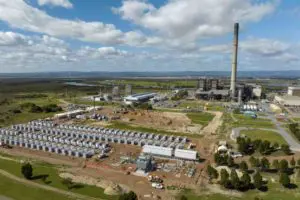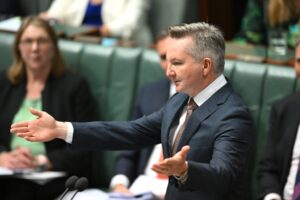Western Australia has taken a step closer to establishing a local wind energy supply chain industry, including the potential to make turbine towers, foundations and blades, following a new deal between the state government and the Advanced Manufacturing Growth Centre (AMGC).
Through the agreement, an $8 million industry support program will deliver financial and non-financial support to local businesses working towards the manufacture and service wind turbine components.
As part of the deal, the AMGC – an industry-led organisation focused on supporting innovation, commercialisation and collaboration – will establish a WA presence to work with local businesses, a government statement says.
“We want to provide funding and opportunity for these local businesses to supply parts to [wind] projects across our state, and across the nation, which will ultimately increase their competitiveness in local and global markets,” said Stephen Dawson, the minister assisting the minister for industry development.
“We have a growing number of onshore wind farms in WA which represents a significant opportunity for our local advanced manufacturing industry.
“We are quite literally blown away with the wider range of opportunities that this landmark agreement with the AMGC could bring to Western Australia, to strengthen our economy and create more jobs.”
Western Australia recently produced a report that forecast more than 50 gigawatts of new wind and solar capacity needs by 2040 to meet demands for clean energy, new zero carbon industries such as green hydrogen and green iron and steel, and the shift to electrification. A local industry will help sidestep international supply chain blockages.
The move follows the findings of an independent feasibility study by Aurecon, that confirmed a strong appetite and existing capability to pursue wind energy componentry manufacturing and servicing. The study also noted the need for government support to seize those opportunities.
In manufacturing, the report identified several opportunities for local businesses, with key areas including the manufacturing of wind turbine towers, foundations and blades.
The report also found that onshore construction and provision of operation and maintenance services remained viable areas of operation for WA business, albeit with the need for additional equipment and skills development moving forward.
Potential was also identified in the pursuit of opportunities to manufacture rotor/hubs, bedplates, nacelle covers (including spinner) and nacelle assembly, the report recommending local businesses take a collaborative approach to this segment, by contracting for or collaborating with existing manufacturers.
Further opportunities were found in the potential for WA businesses to recondition and repair gearboxes, pitch and yaw systems, generators and main bearings and shafts, and to build capabilities in the recovery and recycling of use turbine parts.
The WA government says that through this particular program, the focus will be on supporting businesses’ prequalification processes with wind turbine componentry for original equipment manufacturers (OEMs), the upgrade of plant and equipment, and provision of professional advice.
“The Cook Government is harnessing the power of wind to support our local manufacturing industry to enter new supply chains and boost WA’s transition to a renewable future,” said Dawson.
“In 2023, wind accounted for nearly 34 per cent of Australia’s renewable power generation and this is expected to increase significantly in coming years.”










